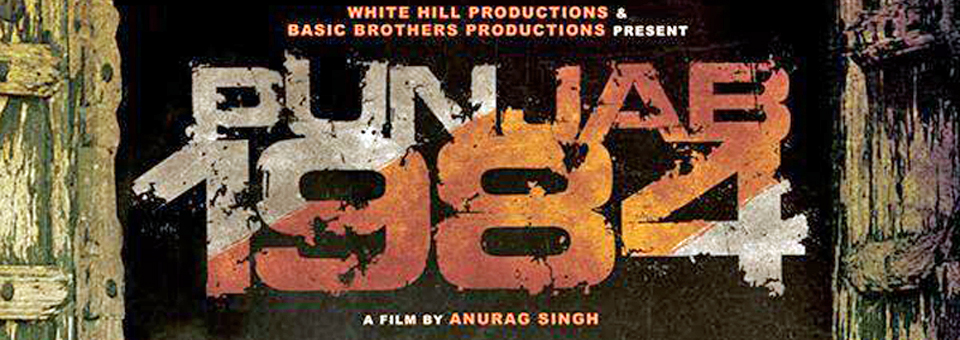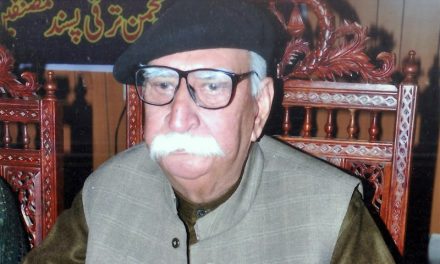Before analysing this movie, one question that really needs to be answered is, how well thought out was the name of the movie: ‘Punjab 1984’? With all fairness to the hardworking team responsible for this project, let’s safely presume that it was pretty well thought out. And, after that presumption, my immediate reaction is that the contents, the story line and the message of this film have no relevance to the title what so ever. It is, perhaps, manipulatively misleading.
The movie tries to portray the ‘Punjab-Problem’ as a regional disturbance stemming from foreign infiltration, discretely orchestrated by power-driven corrupt politicians, executed by greedy and atrocious local police forces, and manipulatively fueled by social animosities, land disputes, family problems and the petty issues of college youths. Finally, the movie leads to the conclusion that the explosively dangerous amalgamation of all of the above mentioned factors spun way out of control in all fronts, leading to the mass-killings of innocents, execution of personal vendettas, disappearances of numerous innocent youths, torture of countless people, destruction of scores of families resulting in unbearable and incurable scars on the people affected by it; all happening on the pretext of the so called ‘Sikh movement of freedom’ on one side and the so-called ‘efforts of the administration to restore law and order’ on the other. And, of course, the story line is built around emotional outbursts of a son following the killing of his father, the trauma of a mother running from pillar to post in search of her missing son, the tragic ruin of young love, and the yearning of a son to return to his disillusioned, lonely, ageing and fading mother. All of this leaves the viewers crying with pain at many points, struck with the haunting revelation, “holy Mother of God… is it this that really happened?!“, followed by a fearful payer that “may this never happen in our land of Punjab again“.
In its justification, the most dangerous (and deceitful) argument that movie makers along with their supporters and admirers put forward is that everything shown in the movie is based on true facts and incidents that actually did happen in Punjab. Well, that is true! But my question is that considering all of the facts shown in the film which are projected to present the ‘entirety’ of the movement, do they really present the complete story and that too in a historically accurate and chronologically correct timeline? It should be remembered that Truth is only ‘The Truth’ if it is complete. Incomplete truth with missing patches of time and a maliciously permuted presentation of the facts can create a work which would be rendered as a grossly misleading historical blunder.
After showing one (just one!) scene from Operation Blue Star, the story line of the movie shifts to the time line of incidents that happened in the early 1990s. It focuses on the mass level of atrocities that happened in those years in which all and sundry were targeted by the Police and innocents were butchered. The real struggle for seeking justice for the Sikhs in India had unfortunately, got derailed to the great extent by the beginning of that decade; what began as a peaceful movement after the historic Ardas done at the Akal Takht by the gallant warrior and Saint Soldier, Sant Jarnail Singh Bhindranwale and which was turned violent by the unprecedented atrocities of Mrs Indira Gandhi and the Punjab Police force, ultimately led to the darkest chapter of modern Sikh History, Operation Blue Star, resulting in the assassination of Mrs Gandhi, followed by the valiant, armed guerilla war in Punjab by inspired youth of the brave Sikh Nation seeking justice from the Indian State. This downfall happened due to many factors, which demands a comprehensive and deeper analysis. Infiltration by intelligence agencies on a large scale was undoubtedly one of the major factors which led to large scale arrests and the killings of Sikh revolutionaries, many of them highly committed and ideologically motivated. There is no doubt that some sections of leadership within the Sikh militant struggle did commit some strategic mistakes which facilitated the downfall of the movement. It provided the malicious Indian State good opportunity to mount a full-scale, brutal attack on the movement.
The era of the early 1990s was the era where police committed inhumane torture and murders which were, mostly, but not solely, influenced by local vendettas, politicians, land feuds, local animosities and bounty killings. The Police had been blessed with the complete freedom to do anything and everything; they were not accountable to anyone and after the elimination of prominent and valiant Sikh militant fighters, they feared no one. It is mainly this phase that is shown in the movie. The core problem and the actual reason of the Sikh militant struggle was the Genocide of the Sikh Nation, of its history and spiritual zeal, which has roots back in the post 1947 era, but started more practically in the late 1970s, had its prime in June 1984 and continued until the mid 1990s. This was not even touched upon in the movie.
This movie was cleared uncut by the censor board and is being widely propagated by strange sections of society, unlike the two movies that came out in the recent past on the Punjab Movement which were banned to begin with. Why was this so? Both of the previous movies tried to present a portion of the history of this movement in a truthful perspective and were well accepted by the Sikh masses. Whenever there runs a school of thought which is propagated in the masses with popularity but does not fit well with powerful opponents who cannot challenge it openly due to its historical and philosophical truthfulness, the only lame option left is for this opposition to counter float a parallel, yet subtly misleading school of thought in order to create confusion in the masses. This seems to be the motive behind this movie and it was so pathetically apparent. It will not work however, on an ever-increasingly informed Sikh populace.





